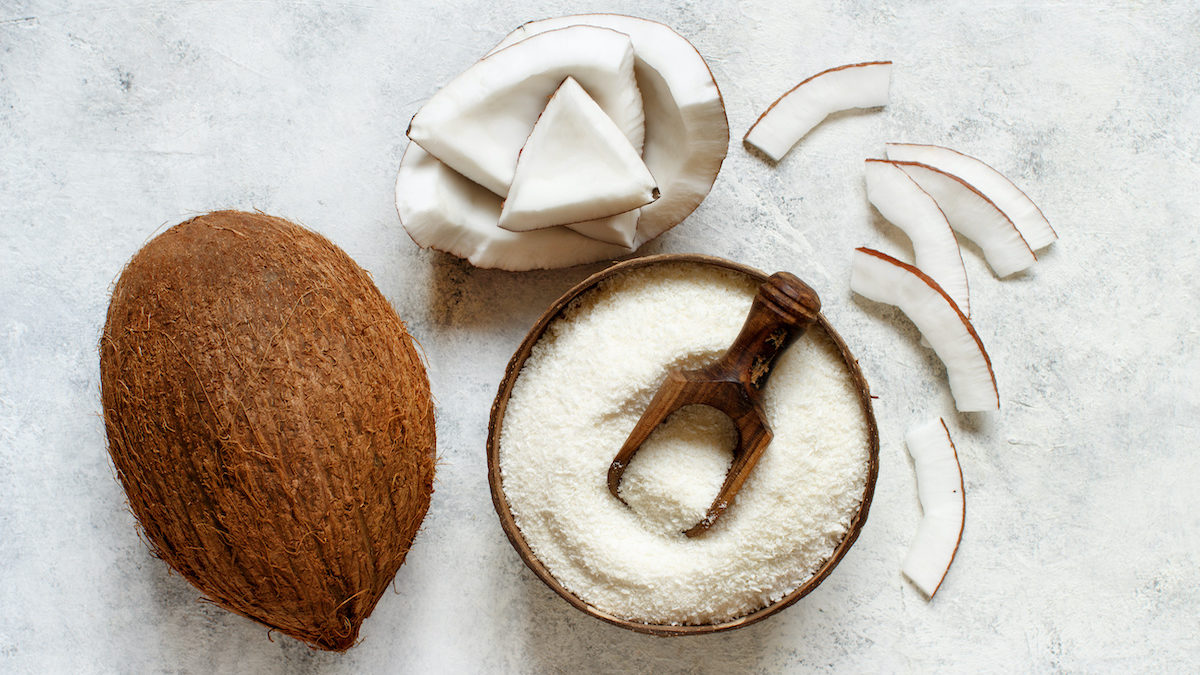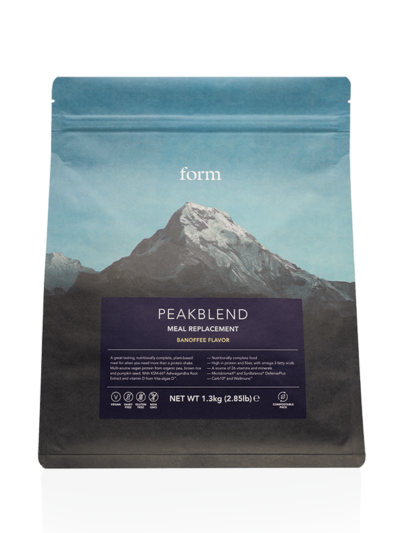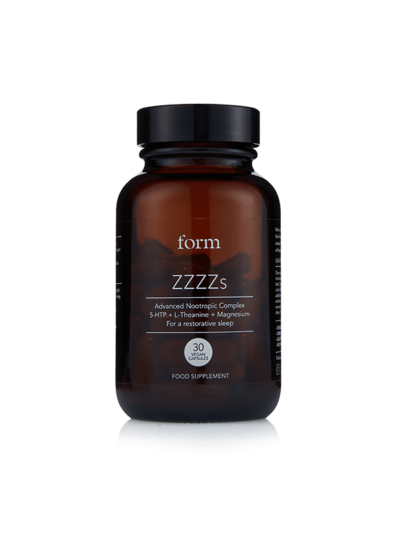Get To Know Your Rye From Your Spelt With This Comprehensive Guide To Baking Flours

When it comes to baking in the kitchen, flour power is important. After all, the ground-down powder is the base for pretty much everything — comforting sourdough, fluffy muffins, crumbly biccies. And if you’re a nutrition nerd like us, then you’ll be pleased to discover that flour is an excellent source of protein, vitamins, fibre and complex carbohydrates, with the first on that list especially important when it comes to the fine art of baking with flour.
“The proteins in flour are related to the wheat used and how it is milled,” explains Paul Coonan, a chef of 20 years and founder of healthy food blog, The Urban Canteen. “It is also directly related to the gluten, as these are gluten forming proteins. Typically the higher the protein content, the higher the gluten content.
“So strong flours that are used for bread making have a high gluten and protein content, while softer flours like plain flour and self-raising, which are used for cakes, biscuits, and pastry, will have a lower protein and gluten content.”
Here Coonan goes deeper into seven of the main baking flours, from plain standards to gluten-free alternatives, along with some handy tips on storage.
Breaking Down the Main Baking Flours
Plain flour
Plain flour is an all-purpose flour with a lower protein and gluten content. This makes the flour softer and ideal for cakes, pastries, thickening sauces, and biscuits.
Wholemeal Flour
Wholemeal flour is a great all-purpose flour to use in all types of baking from biscuits and cakes to breads. Despite it being higher in protein, the bran can affect the glutens elasticity capabilities, which can lead to denser bread, so avoid using this flour if you are looking for something “airy and light”.
It is a great way to incorporate more whole grain and fibre into your diet. When baking rather than simply substituting a plain flour for a wholemeal, use 1/3 whole to 2/3 plain, or 1/2 wholemeal to 1/2 plain. This will give you the benefits of plain flour as well as the benefits and nutrients of wholemeal, along with a better flavour. Do also be aware of the shelf life when buying wholemeal flour, as it tends to be shorter because of the natural oils turning rancid.

Self-Raising Flour
Self-raising flour is perfect for when you’re after those light and airy cakes, batters, muffins, and sponges. Self-raising is basically a plain flour with raising agents mixed in, but because raising agents have a limited shelf life be careful not to leave your self-raising flour in the back of your cupboard for too long before using it — you may find your cake falling flat. In contrast, plain flour has a longer shelf life because it doesn’t include these raising agents.
Bread Flour
Bread flour is a strong flour which means it has a higher protein and gluten content than the flours used for cakes like plain flour. This makes strong flour ideal for breads and bagels as gluten is what gives you an elastic structure in your baking so you get that chewy texture in your bread.
When kneading the dough during bread making, this is what develops the gluten and gives you that elasticity. If you over-knead the dough or leave it too long in your mixer, the gluten will overdevelop and this will result in a tough loaf that is hard to tear or chew.

Rye Flour
Rye flour is typically used in bread making or more savoury baking, but can be used and incorporated with plain flour in pastry or cakes. It will give your bakes a strong, rich, tangy flavour, and is low in gluten but not free from it. This will result in a dense bread, so it is usually best to mix with a higher protein and gluten flour when baking, to achieve the results you wish for.
Coconut Flour
Coconut flour does not contain gluten or wheat — but do read the label to make sure it is made in a facility that does not handle other flours — which makes this a favourite within the gluten free and paleo world. Although it can be used in pancakes, muffins breads, cookies, it typically requires a great deal of experimentation to get it right.
Coconut flour is extremely absorbent and will take on a lot of liquid you see, which is why it can be challenging to work with for anyone, and can lead to dry tasting bakes which continue to absorb moisture after the bake.
You may need to mix it with other flours then to get the benefits from them like raising agents and elasticity. Rely on well established recipes rather than just trying to substitute it yourself, or like I mentioned, at least be prepared to experiment and get it wrong a couple of times.

Spelt Flour
Used in breads, pastas, crackers, and cookies, spelt flour brings a lovely nutty like taste to the table. It is similar to wholemeal because it is high in protein due to the grains, but low in gluten. However you do not get that elasticity, so it will lead to a denser bake.
Again, it is good practice to incorporate it with other flours for better bakes, so rather than swap it out and replace an all-purpose flour for spelt, for example, use a mix of both flours in the recipe. Although it is wheat technically, many people with an intolerance to wheat find spelt flour easier to digest.
Storing Your Flour
Flour will absorb odours and moisture very easily, so airtight containers are absolutely vital. You obviously want your flour to stay as fresh as possible too, so the environment also needs to be cold or at the very least cool.
Keeping your flour in an airtight container in the freezer would be perfect, however, not many of us have large freezers big enough to accommodate bags of flour, especially if you are a keen baker with several types of flour, so your next port of call would be the fridge. But again, if you have multiple containers of flour, using your fridge may not be realistic either.
So if you have a pantry or cupboard that is away from heaters and generally stays cool, then this is where you should store it. You also want the space to be dark. Light usually brings heat, which we have already established is something we want to stay away from, and light in itself can cause oxidation which will cause the flour to spoil. If your pantry is quite a bright space or has no doors then try to use opaque containers rather than clear.


















